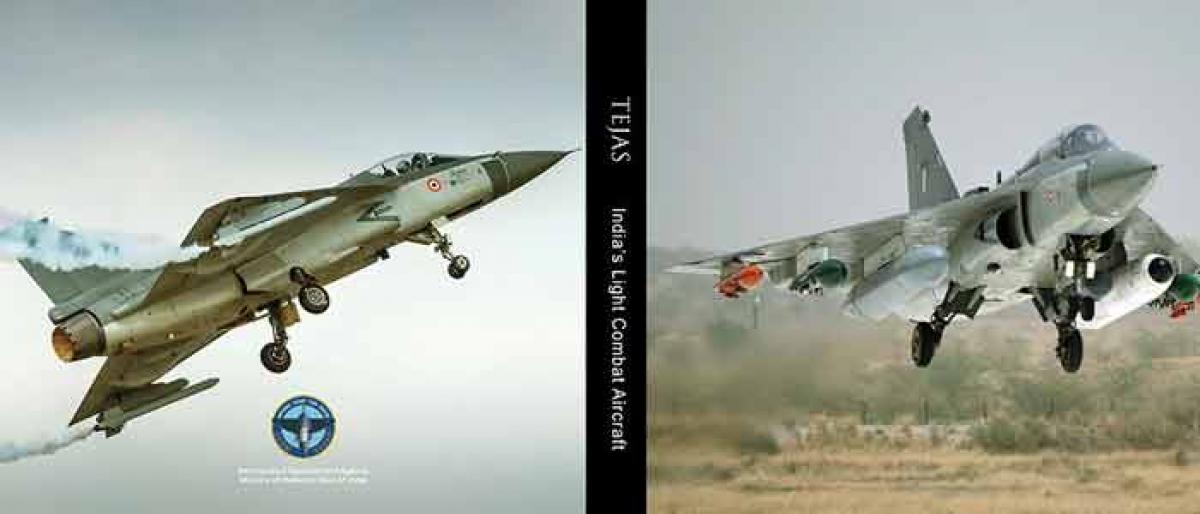Live
- UP govt prepares question banks for students
- Educating youth about importance of maintaining a healthy liver
- Nine candidates enter the poll fray on first day
- IIT-K, BFI forge partnership to accelerate healthcare innovation
- Nurture self-confidence and growth
- Nominations filed for Kurnool & Nandyal constituencies
- YSRCP’s ‘poor’ candidate owns assets of Rs 161 crore
- 12 nominations filed on Day-1
- Infy profit zooms 30% to ₹ 7,969cr in Q4
- Only 9.83 pc candidates are women in NE states
Just In

Chief of Staff of the United States Air Force (USAF) Gen. David L Goldfein flew a sortie on India\'s indigenously built Light Combat Aircraft (LCA) Tejas on February 3. He is the first service air chief of a foreign country to fly on the Tejas.
Chief of Staff of the United States Air Force (USAF) Gen. David L Goldfein flew a sortie on India's indigenously built Light Combat Aircraft (LCA) Tejas on February 3. He is the first service air chief of a foreign country to fly on the Tejas.
It is seen as a sign of a strengthening defence relationship between US and India. Tejas is the indigenous LCA, a single-seat, single-jet engine, multi-role light fighter, which is being pitched as the replacement of the ageing MIG-21 aircraft. Developed by the Aeronautical Development Agency, and produced by Hindustan Aeronautics Limited, Tejas is a fourth generation aircraft. It can fly at 1,350 km per hour, with a payload capacity of 4,000 kg.
The Light Combat Aircraft (LCA) - Tejas SP-7 completed its maiden flight from HAL Airport in Bengaluru on 12th Dec 2017 piloted by Gp. Capt. KK Venugopal (Retd). The LCA Tejas SP-7 will be the sixth member of the No.45 Squadron of the Indian Air Force also called the 'Flying Daggers' India’s Light Combat Aircraft (LCA) together with its variants, is the smallest and lightest Multi-Role Supersonic Fighter Aircraft of its class.
This single engine, Compound-Delta-Wing, Tailless Aircraft is designed and developed by ADA with HAL as the principal partner along with DRDO, CSIR, BEL, DGAQA, IAF & IN to meet diverse needs of the Indian Air Force (IAF) and Indian Navy (IN), according to http://www.tejas.gov.in/. The value of the aerospace "self-reliance" initiative was not simply the production of an aircraft, but also the building of a local industry capable of creating state-of-the-art products with commercial spin-offs for a global market.
The LCA programme was intended in part to further expand and advance India's indigenous aerospace capabilities. In the early eighties, it was realised that no organisation existed which had the total capability to develop such an aircraft all on its own. The last time an indigenous fighter aircraft, the HF 24 flew was in 1961. Since then, the HF 24 assembly line had been shut down and the design team had been wound up. The only way left was to develop an aircraft from scratch. That’s when Tejas idea originated.

© 2024 Hyderabad Media House Limited/The Hans India. All rights reserved. Powered by hocalwire.com







